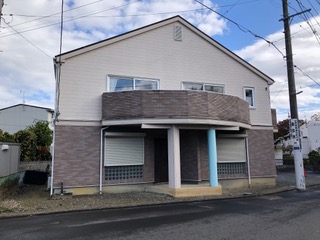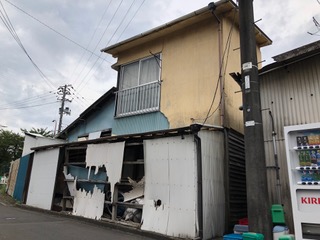New, but lifeless; shabby, but alive
- At November 12, 2020
- By admin
- In Annes Letters
 0
0
Dear Family and Friends,
As Biden talks about “The Soul of the Nation”, I would like to talk about “The Soul of the Future”. And to do that, I will turn to my neighborhood in Sendai.
Anything you say about Japan is true. And so is its opposite. Without a doubt, it is a country of many contradictions. Take gardens, for example. This country is renowned for ones that are carefully trimmed and raked, some going back hundreds, if not thousands of years. Yet, modern homes are some of the most barren imaginable with nothing green in sight, only blacktop or a parking lot smack up to the front door. Japanese say they love nature, but often when it comes to their homes, it is as if they want to kill anything alive that comes near. It seems in many cases, there is only verbal concern for global warming. And indeed, last summer with all the new roads and parking lots — and no trees — it was unbearably hot.
On the other hand, despite this deluge of new housing developments since the 2011 earthquake, leaving no free space anywhere, there are also many abandoned homes sprinkled all over the city. It is as if the inhabitants simply walked out, closed the door, and never came back. You can even see kitchen utensils still hanging in windows, or clothes waiting for the next day of work. Being Japan, there is no question of vandalism. So, these buildings remain, getting older and shabbier as the years go by. Their age and emptiness give an eerie feeling. But at the same time, the wildly overgrown gardens and rusty walls yield a sense of life and of mystery. Surely that is good for the imagination and the soul, don’t you think?
On the other hand, despite this deluge of new housing developments since the 2011 earthquake, leaving no free space anywhere, there are also many abandoned homes sprinkled all over the city. It is as if the inhabitants simply walked out, closed the door, and never came back. You can even see kitchen utensils still hanging in windows, or clothes waiting for the next day of work. Being Japan, there is no question of vandalism. So, these buildings remain, getting older and shabbier as the years go by. Their age and emptiness give an eerie feeling. But at the same time, the wildly overgrown gardens and rusty walls yield a sense of life and of mystery. Surely that is good for the imagination and the soul, don’t you think?
Other abodes are literal shacks, somehow standing, yet with people actually living in them. An old lady near me lives in one and says, “I am so blessed. I have a roof over my head that does not leak. My home is humble, but it is all I need.” She has an abundant garden, small, but full of vegetables and flowers. They match her positive attitude, and make her corner home be life-filled and forever joyous. In fact, she is known and loved all over the neighborhood. And she knows all of us in return.
This extreme contrast of inhabited, but lifeless homes, next to shacks or empty, but alive ones has led me on many photo explorations around my neighborhood. Here are a few of the shots so far. Maybe you will be as intrigued as I am in seeing of them, each with its unique presence and definite personality.


Where do the children play?

This extreme contrast of inhabited, but lifeless homes, next to shacks or empty, but alive ones has led me on many photo explorations around my neighborhood. Here are a few of the shots so far. Maybe you will be as intrigued as I am in seeing of them, each with its unique presence and definite personality.
Inhabited, but Lifeless
Front door literally on the main road

Not a tree in sight to celebrate the change of seasons

Where do the children play?

Uninhabited, but Alive


Even a bicycle is left as is

Beautiful rusty gate


Barely Standing, but Inhabited
Ivy covered shack, WiFi dish, new car

My grateful neighbor’s home and garden

My neighbor’s friend lives here.
“He and I moved to this neighborhood at the same time.
We have been friends for years.”

These photos seem to show that Japan, too, is a very divided society. The differences are not as loudly broadcast as in America, but they are there, and for the most part, accepted. There are the rich and the poor. Those who live in newness and comfort, next to those who reside in poverty. There are small developments with soulless homes popping up like mushrooms coupled with shacks and empty places filled to the brim with life of one form or another. The unifier in all this, though, is a deep sense of national identity. “We are Japanese and we are very proud of it.” I hope very soon Americans, with maturity and no embarrassment, will be able to say the same.
Love,
Anne



